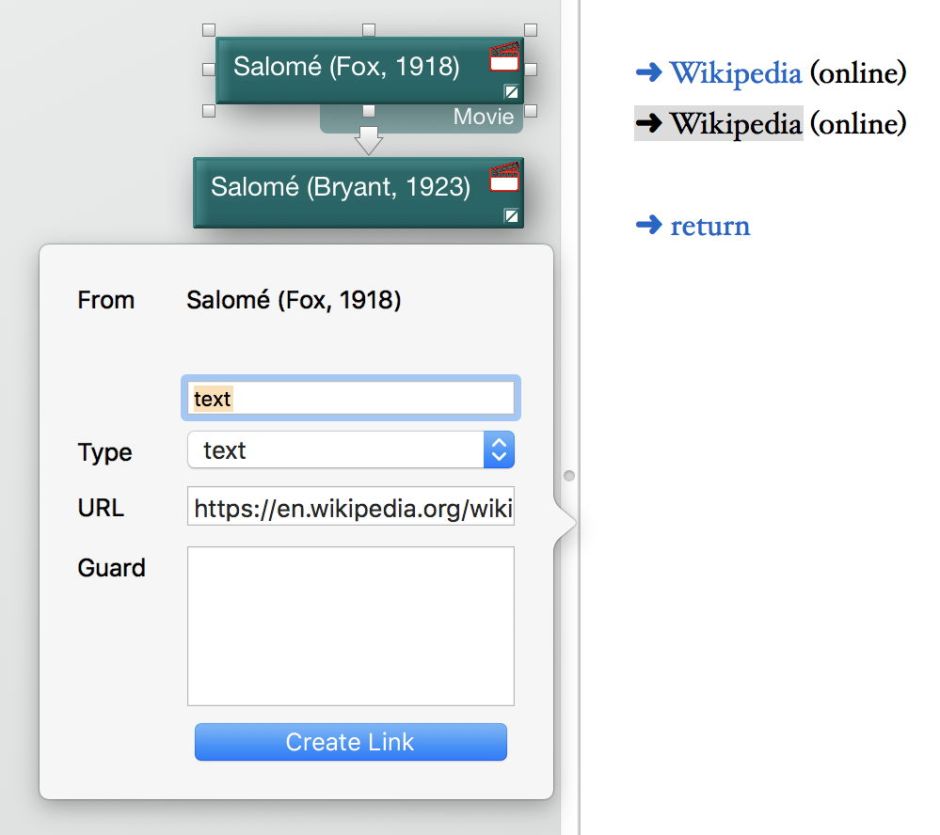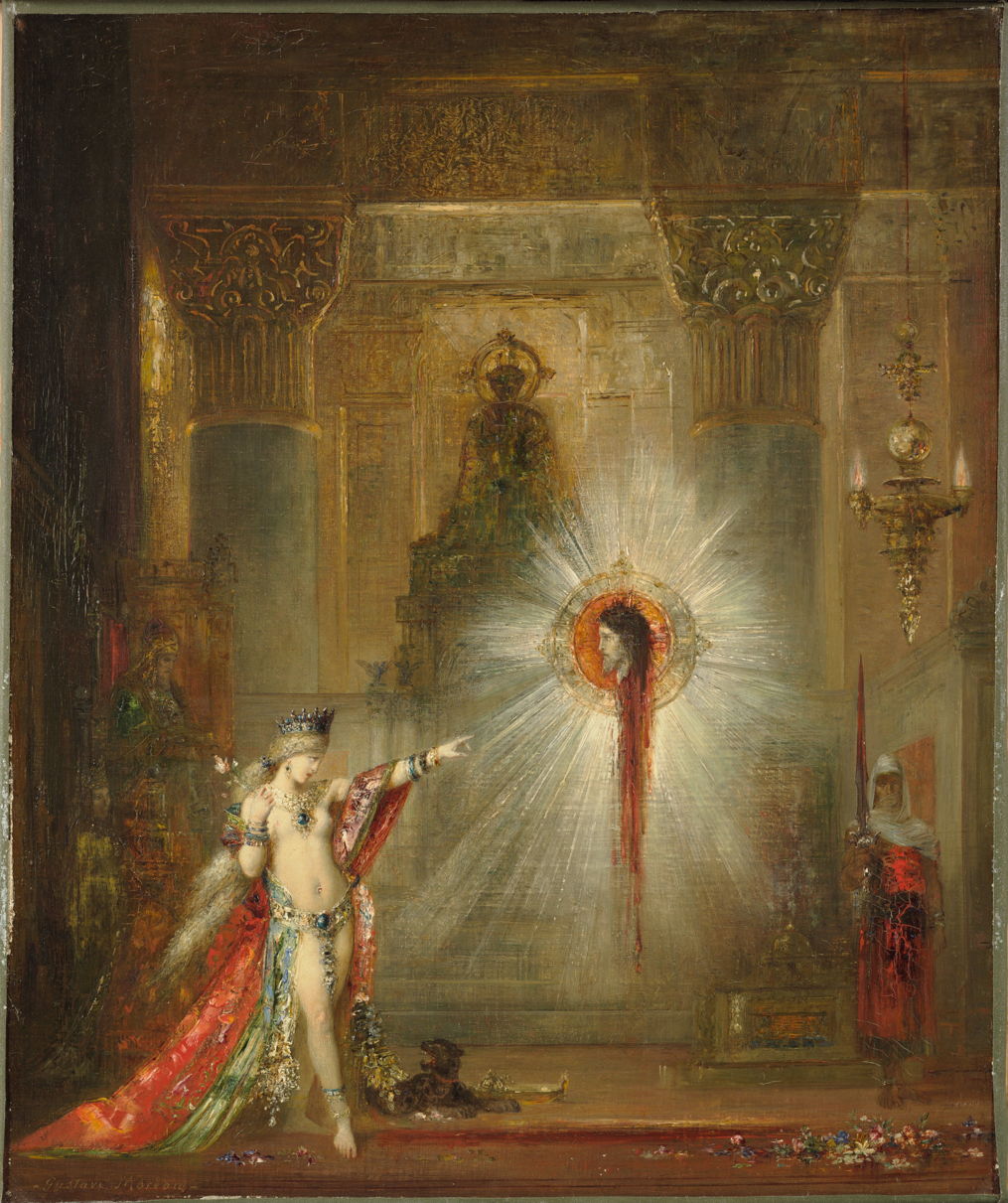In my last article, I reported experiencing some limitations when using Web Links. Following further assistance from Mark Anderson, I can explain more clearly how they should work, even though in that particular (now pretty large and complex) Storyspace document they don’t appear to do so.
Once I have explained that, I will move on to what will be, I hope, the climax in this particular story, when I explore all the information that I now have in my hypertext document.
Text Web Links and ‘smart’ web links
There are two fundamentally different ways in Storyspace 3 of putting web links into writing spaces. The method that I have been using so far is based on the ‘smart’ link which comes with the rich text provided in writing space content, but does not involve a true hypertext link. Although it works fine in Storyspace – which is intended for authoring hypertext for others to read using its reader app – it is a problem in sibling app Tinderbox, because that is designed with a view to exporting its notes. And ‘smart’ links don’t export at all well.
Thus the better way ahead, which enjoys full support in Tinderbox too, is to use Web Links from the Note menu command Make Web Link…. These are readily created and maintained (there is little you can do to update a ‘smart’ link other than to make it afresh). A straightforward workflow is to insert the anchor text which is going to be used for the link (as a text link), and select it.

Here the upper blue text is an existing ‘smart’ link for comparison, and I have selected the text in the line below which will form the anchor for the proper Web Link. Then, bring up the page to which you are linking in your browser, select its URL and copy it, as if you were going to paste that URL into a document. Instead of pasting it, go to the foot of the Note menu, and select the Make Web Link… command.


The link panel will then appear, just as if you were creating a regular link, which you are. Set the Type to text, as it is a text link that you want, and check that the URL given is correct. Then click on the Create Link button.

When you then browse the links (View menu) for that writing space, you will see, and can edit, that link, together with any other links for that writing space. But you cannot see the ‘smart’ link, as it is not a link in this sense.
The reason for my problems in getting text Web Links to work here is the use of non-ASCII characters in the URL: this will be fixed in the next release of Storyspace 3. In the meantime the workarounds are to use ‘smart’ web links, or to limit characters in URLs to plain old ASCII text, which is usually not difficult. Thanks to Mark Bernstein for diagnosing and fixing that amazingly quickly.
Telling stories apart
I have now got all my paintings, several text sources, some plays, operas, and movies all added to my hypertext. Looking through it, I want to be able to distinguish which works followed the Biblical story, and which followed the modified story told most clearly in Wilde’s play Salome.
There’s been quite a lot of work which has looked at how narratives have changed over time. Although some like to draw conclusions about more symbolic issues – and there’s a lot you can examine in these stories in that respect – in pure narrative terms the most basic difference is in the actor who wanted John to be executed.
The traditional story makes it clear that was Herodias, wife of Herod and mother of Salome, because of John’s attacks on her second marriage to Herod. Wilde’s story relegates the role of Herodias and makes Salome the villain of the piece, because she wanted John to love her, and he refused.
Story-telling in paintings has been viewed as being tied to a verbal (oral or text) original. Although painters can and do embellish their visual representations, because they can only fully represent a single scene (a moment in time) from the whole narrative, their ability to bring about radical change, or to tell a completely new story, is usually believed to be extremely limited.
What I want to do is to see which work(s) of art – verbal, visual, or whatever – caused the traditional story to become forked, giving the new story told by Wilde.
Key to this is being able to see readily which works appear to conform to the traditional story, and which are so inconsistent with that, that they must be telling the story given by Wilde. Extensive studies of, for example, classical vase paintings, have shown that visual artists often embellish and may stray a little from the verbal story, particularly in the days when that story was transmitted orally. But it is unusual, perhaps very exceptional, for a visual artist to contradict the main storyline.
One easy way of doing this here is with badges and the timeline view. To help do this, I have created some custom badges which are just standard icons, but coloured blue (for the traditional storyline, with Herodias as the villain) and red (for Wilde’s storyline with Salome as the villain).

Put those PNG files into the Library in your Home folder, in the path Application Support/Storyspace/badges, and they will be accessible when you use Storyspace.

I now set the default badges to be used for each of the prototypes to be the blue version. This switches all the current badges in use to blue.

I now work through each of the works in the Gallery, etc., and switch those which are based on the Wilde storyline to use the red badge.

This works well in the Timeline view. If you’re new to Storyspace and have not used this view yet, it is a little tricky to enter. You will first need to go to the Window menu and Show Toolbar. In that, you can select the Timeline view.

Although this works well in its defaults, one immediate issue is that it is cluttered by all the links shown. To fix that, open the Inspector, select the Document Inspector tool, and the Links tab. Work through each of the Link types in the popup menu, turning off the visible setting below, and your links will become invisible. If you need to turn them back on, just enable the visible item again.

The other important control for the Timeline view is the window of time to be shown. Still using the Document Inspector, select the System tab, set the Category to Events, and the Attribute popup menu will list all the standard attributes that affect the Timeline. The two important attributes here are $TimelineStart and $TimelineEnd: set those to the dates to determine the time window.

Viewed with a wide time window, to include all the works, it is clear that the traditional story was popular for depiction in paintings through the Renaissance, and from the nineteenth century onwards. I admit to not having included every painting which I could, but like all hagiographic portrayals of saints, the period of popularity was the Renaissance.
The extreme popularity in the nineteenth century reflects the increasingly diverse depictions and to a certain extent my own interest, but there is no doubt that paintings and other works based on these stories became unusually popular at that time. Compared with the martyrdoms of Saint Catherine or Saint Erasmus (which had been popular during the Renaissance), the death of John the Baptist was hugely popular from about 1850 onwards, when the red-badged works start to appear. But this resurgence of popularity occurred using both the traditional and Wilde storylines.

Honing in on that period, and selecting the earliest of Moreau’s paintings of The Apparition, it is clear that, of the depictions, portrayals, and tellings of the stories, his were the first to use the storyline told in full by Wilde, some years later.
The one fly in my ointment is, perhaps inevitably, Mallarmé. Although I have left his poetic version with a blue badge, and its title Hérodiade would suggest that he was following the traditional story, he actually confounds the whole story. In his later introduction to the poems which he wrote and rewrote for much of his life, over thirty years, he claims that he actually wanted to write about Salome, but in order to make a clear distinction between his version of Salome and the Biblical version, he decided to give her a new name – Hérodiade, which is the French name more usually given to Herodias (as in Massenet’s opera of that name).
So although I am confident, on the evidence that I have seen, that it was Moreau’s paintings of The Apparition which led to this new storyline, as with all good stories, it isn’t quite as simple as that.
I will complete my Storyspace document over the next few days, and post it here so that you can decide for yourselves.

